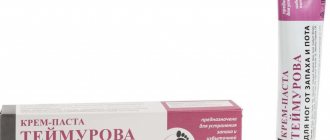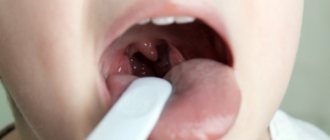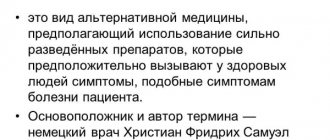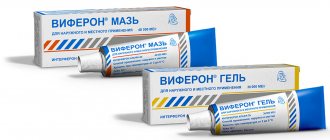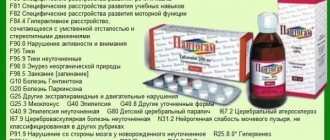"Levomekol" is an antibacterial combination drug for external use with a wide spectrum of action. Levomekol ointment prevents the spread of pathogenic microbes, eliminates swelling, accelerates wound healing, and also increases local skin immunity.
Levomekol for burns
This combination is provided by two active components in the ointment - Chloramphenicol (aka Levomycetin) and Methyluracil. Chloramphenicol is a natural antibiotic that actively blocks intestinal, pseudomonas and staphylococcal bacilli. And methyluracil accelerates the regeneration of the epidermis. The peculiarity of methyluracil is its ability to easily and quickly penetrate into the dermis, without affecting the membrane cell membrane. This process is associated with the removal of excess fluid from the intercellular space, which usually causes swelling and bruising.
What is Levomekol used for?
Levomekol has a multifaceted therapeutic effect:
- quickly reduces the inflammatory process, prevents its spread to healthy tissues;
- prevents the growth and reproduction of bacterial infectious agents;
- quickly eliminates swelling by normalizing microcirculation;
- ensures delivery of nutrients and biologically active substances, as well as molecular oxygen, to the affected tissues;
- stimulates the regeneration of inflammatory cells of all layers of the epidermis;
- increases immunity at the local level.
The ointment quickly removes all inflammatory processes on the skin
It is worth noting that the presence of purulent discharge and necrotic tissue does not prevent Levomekol ointment from performing its function. The drug can be used to disinfect and accelerate tissue regeneration.
Indications for use of Levomekol ointment
Since Levomekol ointment has an antibacterial effect, and at the same time stimulates the restoration of tissue structure, the drug is indicated for the following diseases:
- infection of wounds with pathogenic microflora, ulcers and purulent abscesses on the epidermis;
- burns (mostly 2nd and 3rd degree);
- violation of tissue integrity due to injuries;
- necrotic processes;
- weeping and dry eczema;
- calluses;
- trophic ulcers;
- frostbite of the extremities (superficial layers of the skin);
- pimples, acne, carbuncles, boils;
- otitis and sinusitis (including with purulent discharge);
- treatment of sutures after surgery
- bedsores;
- haemorrhoids.
Levomekol ointment can be used for children
"Levomekol" can be used for children from 1 year. But before this, it is imperative to consult a pediatrician.
Contraindications
Like many drugs, Levomekol has contraindications:
- individual intolerance to the components of the medication;
- hypersensitivity of the body;
- fungal infections of the epidermis;
- tendency to allergic reactions;
- psoriasis.
The official instructions for use indicate that in pediatrics the ointment is prescribed starting from 3 years of age. However, many pediatricians, based on the harmlessness of Levomekol, allow its use from infancy.
Side effects
Levomekol is considered a universal drug and is usually well tolerated by patients. But in case of overdose (if the drug is used for more than a week), allergic skin reactions may occur.
- hyperemia;
- burning;
- itching;
- urticaria;
- dermatitis at the site of application;
- local swelling;
- When using vaginal tampons, candidiasis may occur.
No incompatibility with other medicinal products has been reported. Make sure that the ointment does not get into your eyes, mucous membranes or inside. In case of contact with eyes and mucous membranes, rinse them immediately with running water. If swallowed, the stomach must be rinsed.
Mekol-Borimed ointment for external use. approx. 40g tube No. 1
MEKOL Dosage form: ointment for external use.
Composition: 40 g of ointment contains: active ingredients - chloramphenicol - 0.30 g, methyluracil - 1.60 g; excipients - macrogol 1500, macrogol 400.
Description: ointment of white or white with a yellowish tint.
Pharmacotherapeutic group: antibiotics in combination with other drugs for the treatment of skin diseases. ATX code: D06C.
Indications for use Purulent wounds (including those infected with mixed microflora) in the first (purulent-necrotic) phase of the wound process.
Contraindications Hypersensitivity to the components of the drug, psoriasis, eczema, fungal skin lesions, malignant skin neoplasms and metastatic trophic skin lesions, children under 3 years of age.
Method of administration and dosage The drug is intended for external use in adults and children over 3 years of age. Soak sterile gauze pads with the ointment to fill the wound. It is possible to introduce the ointment into purulent cavities through a catheter (drainage tube) using a syringe. In such cases, preheat the ointment to 35-36C. Perform dressings daily until the wound is completely cleansed of purulent-necrotic masses and before their granulation begins. For a large area of wound surfaces, the daily dose of ointment in terms of chloramphenicol (chloramphenicol) should not exceed 3 g. Apply the ointment from the first day of injury for 4 days. Mecol is not recommended for long-term use, as osmotic shock is possible in intact cells. On days 5-7 of treatment, it is recommended to change the ointment to drugs that restore the integrity of the damaged tissue.
Precautions The use of antibacterial agents for external use can lead to skin sensitization, accompanied by the development of hypersensitivity reactions with further use of this drug externally or in the form of a systemic dosage form. In the presence of pus or necrotic masses, the antibacterial effect of the drug remains. Do not allow the ointment to come into contact with the mucous membrane of the eyes. With long-term (more than 1 month) use of the drug, it is necessary to monitor the state of the peripheral blood picture.
Use during pregnancy and breastfeeding If you are pregnant or breastfeeding, if you think you may be pregnant or if you do not rule out the possibility of pregnancy, tell your doctor. Use during pregnancy and breastfeeding is contraindicated.
Influence on the ability to drive vehicles and operate machinery No effect
Side effects Local reactions: irritant effect, contact dermatitis. From the hematopoietic system: thrombocytopenia, leukopenia, agranulocytosis, reticolocytopenia, aplastic anemia. From the digestive system: nausea, vomiting, diarrhea, flatulence. From the central nervous system and peripheral nervous system: peripheral neuritis, headache. Allergic reactions: skin rash, urticaria, itching, burning, angioedema. If side effects occur, tell your doctor.
Interactions with other medicines If you are currently or in the recent past taking other medicines, tell your doctor. Concomitant use with drugs that inhibit hematopoiesis (sulfonamides, cytostatics, pyrazoline derivatives) is undesirable. The drug is incompatible with barbiturates and alcohol.
Overdose Long-term (more than 5-7 days) external use often leads to contact sensitization, which is accompanied by the development of hypersensitivity reactions with subsequent use of the drug externally or in the form of dosage forms for systemic use. Therapy is symptomatic.
Release form In tubes of 40 g in package No. 1.
Storage At a temperature not exceeding 20C. Keep out of the reach of children.
Shelf life: 3.5 years. Do not use the medicine after the expiration date.
Conditions for dispensing from pharmacies Without a prescription.
Levomekol in the treatment of burns
For burns, Levomekol is needed to prevent infection of the wound surface with pathogenic infections, as well as to accelerate tissue healing. Levomekol also copes with inflammation, which can lead to suppuration of the wound. The ointment cleanses the affected area well from both purulent discharge and necrotic cells.
The treatment system for a small area burn of 1-2 degrees is as follows:
- before applying the ointment, the wound is washed under running water;
- the ointment is applied to a sterile gauze pad, which is applied to the wound surface;
- the bandage is applied for a day;
- dressings are done every day - up to 5 times a day.
The burn is treated until the tissue is completely healed. The total duration of the course for minor household burns is 5 – 14 days.
How does Levomekol work?
The drug is therapeutic and prophylactic, accelerates the healing process of skin damage (purulent pimples on the face, scratches, burns, post-acne and fresh marks after removal of purulent contents). It has an antimicrobial effect against various microorganisms (staphylococci, streptococci, propionibacterium acnes), accelerates cell regeneration processes, and is intended for external use.
Chloramphenicol (trade name Levomycetin) does not damage cell membranes, easily penetrates deep into tissues, and accelerates recovery processes in them. However, it is worth noting that when combining levomycetin and methyluracil, antagonism occurs, which nullifies the anti-purulent effect of the antibiotic, therefore the maturation of acne on the face accelerates, which is easy to remove (since the amount of pus inside the pimple increases and the pimple matures).
In the long-term practice of our pharmacist, we often encountered cases when people with severe abscesses (an area of at least the palm of the hand or occupying half of the lower leg or thigh) came to the pharmacy. This happened as a result of the fact that people, according to the surgeon’s prescription/recommendation, smeared a boil or subcutaneous abscess on the body with Levomekol for several days or alternated it every other day with Vishnevsky ointment. Therefore, in no case, in the presence of purulent discharge, do we recommend smearing or applying bandages in this way. It should only be applied to a wound that is completely cleansed of pus. This can be achieved by using Vishnevsky ointment for at least four days. Having previously given an outlet to the purulent masses, tearing off the head of the abscess.
The product copes well with rashes that have not yet matured. It is also suitable for patients with red acne. The active substance penetrates into the deep layers of the skin, eliminates the source of infection, and also has an anti-inflammatory and therapeutic effect.
Levomekol in the treatment of acne
"Levomekol" has an antibacterial and wound-healing effect, therefore it is widely used in dermatology, in particular, in the treatment of acne. The course of treatment depends on the severity of the disease and the number of skin rashes.
Small pimples are treated by applying a thin layer of ointment to the affected area. This is done in the evening for several hours, and before bedtime Levomekol is washed off. Within two weeks, pimples disappear, facial skin becomes even, and small scars heal.
Treating acne with ointment
Levomekol is applied to isolated inflamed pimples in a thin layer, covered with a small piece of cotton wool and left for 2-3 hours. Therapy lasts 2-3 days.
As for opened pimples, the medicine is placed directly into the resulting holes.
To treat acne, Levomekol is applied to the affected area overnight. In the morning, the ointment must be washed off. Typically, the course of treatment takes 2 weeks, during which the inflammation subsides and the acne breaks out or resolves.
To eliminate subcutaneous acne, you need to do the following:
- after washing with soap, the skin is cleansed with any tonic or lotion;
- Apply the ointment in a thin layer on a sterile napkin and apply it to the area of skin with acne;
- the bandage is fixed with adhesive tape.
The duration of the treatment procedure is 3-5 hours. If deep, painful ulcers appear on the skin, keep the bandage on the body all night.
The duration of therapy is about 7-10 days, depending on the degree of damage to the dermis.
Levomekol for acne
Complete cleansing of acne on the face is possible after eliminating the cause of its appearance. These are pathogenic bacteria that cause redness and inflammation. The drug quickly penetrates through the pores into the deep layers of the dermis and destroys the source of infection, creating an anti-inflammatory and therapeutic effect.
When using acne medication, positive results are quickly noticeable:
- The swelling in the area of purulent formations instantly decreases.
- Pimples quickly lose their bright color and become less noticeable.
- The ointment restores damaged tissue and after cleansing the face of acne, there will be no ugly scars, dark spots or roughness left on the skin.
- The drug well draws all the pus and dirt from the wound to the surface of the skin. As a result, it quickly tightens and heals.
- After treatment, all irregularities disappear from the face, and the epidermis acquires a beautiful matte color.
Levomekol does an excellent job of treating acne. When the skin feels a little itchy, a pimple has just appeared and is beginning to ripen, lubricate the sore spot with the drug, and the inflammation will go away quickly and painlessly.
Levomikol is distinguished from similar drugs by its affordable price. The product is inexpensive, sold in any pharmacy, and the quality is not inferior to expensive imported analogues.
In cosmetology, ointment is valued for its instant action. When using it for acne, after the first use, the head of the formation begins to lighten, and pus comes out. The inflammatory process immediately stops, and the wound heals in a matter of days.
Levomekol in the treatment of hemorrhoids
Levomekol ointment can be used as an addition to complex therapy for hemorrhoids during periods of exacerbation. It is recommended to use the ointment in cases where blood is released from the hemorrhoids. Since the drug has an antibacterial effect (wounds can be infected with feces), helps relieve inflammation and neutralize pathogenic bacteria, Levomekol is prescribed for the regeneration of anal tissue.
- it is necessary to wash the perineum and anus with soap and water and dry with a soft towel;
- apply a thin layer of ointment to the anus before going to bed;
- the area of influence from above is covered with a bandage and fixed with an adhesive plaster;
- When treating internal nodes, a tampon is soaked in ointment, which is then inserted into the anus.
Levomekol for hemorrhoids
The duration of therapy is 10 days. Since Levomekol is not a specialized antihemorrhoidal drug, after the inflammation has resolved, the decision to continue therapy and prescribe medications is made only by the attending physician.
The effectiveness of Levomekol for conjunctivitis in children and adults
Reference! The drug "Levomekol" is available in the form of a white (odorless) ointment of medium thickness.
In case of contact with mucous membranes, it may cause a slight burning sensation.
Therefore, when treating eye diseases, the product should be applied as carefully as possible.
In the treatment of conjunctivitis in children and adults, the ointment is effective because it has an antibacterial effect (including its effect on infectious agents) and relieves inflammation , and also promotes tissue regeneration.
Most often, the drug is used in combination with other drops and ointments with a similar effect.
Keep in mind! Levomekol is used only for the treatment of bacterial conjunctivitis accompanied by purulent discharge (in the absence of complications).
Levomekol in the treatment of wounds
Levomekol helps heal damaged tissue and prevents infection of the wound surface. Moreover, it is not so important whether the wound has festered or not. If the wound is not purulent, then first the affected area is treated with an antiseptic. The ointment is applied in a thin layer overnight, then it must be covered with a sterile gauze cloth and secured with a bandage. Most often, wound treatment is required once a day.
If the wound festers, then using cotton-gauze swabs moistened with an antiseptic, the pus and secreted secretions are removed. Then Levomekol ointment is applied to the wound - it should be completely filled, but not too tightly. The affected area is covered with a gauze cloth, also soaked in ointment. As for the frequency of changing the bandage, it all depends on the amount of pus released. Usually a double dressing is sufficient.
And if the wound is deep and accompanied by an infectious lesion, then Levomekol is preheated to 35 degrees Celsius, then a sterile napkin is soaked in ointment (several can be used if the affected area is large) and injected into the lesion. If the affected area is large, use several napkins with Levomekol. It is important that the wound is filled completely, but not too tightly.
Note that to administer the medication into puncture and deep wounds, it is better to use a rubber drainage tube, and inject the heated ointment itself using a syringe.
The duration of therapy usually lasts from 5 to 10 days.
Use of Levomekol ointment in gynecology
Levomekol is successfully used in gynecology and urology.
In gynecology, therapy is carried out using tampons with ointment applied to them. A similar method is indicated for the treatment of the following conditions:
- inflammatory erosion of the cervix;
- inflammation of the uterine appendages (ovaries, fallopian tubes);
- divergence of vaginal sutures after ruptures during childbirth or operations.
The treatment system consists of the following sequence of actions:
- before use, a woman must thoroughly wash and dry the skin of the treatment area and perineum;
- if therapy is used after the divergence of vaginal sutures or after operations, then the sutures must be treated with a weak solution of potassium permanganate or furatsilin;
- you need to make a small cotton swab, put an ointment on top of it measuring 15 mm x 15 mm, and 5 mm high;
- insert into the vagina at night and remove in the morning;
- if therapy is used after the divergence of vaginal sutures or after operations, then the ointment is applied to a gauze bandage and applied to the sutures. Then put on clean underwear (if necessary, you can additionally use a pad). The dressing remains on for 2 to 6 hours.
Using the method described above, the active substance of the ointment is delivered to the affected area and absorbed into the surrounding vaginal tissue.
In urology, Levomekol is used in the treatment of balanitis and balanoposthitis in men, as it has anti-inflammatory and antimicrobial effects. The treatment system consists of the following sequence of actions:
- before applying the ointment, the head of the penis is washed with a weak solution of potassium permanganate or furatsilin, removing pus and dead tissue;
- Levomekol is applied to the affected area in a dense layer.
The remedy is applied 1-2 times a day until complete recovery. After the inflammation is relieved, Levomekol is applied for another week, 1 time per day - in the evening, before bedtime.
Cautions and contraindications
Despite the effectiveness of the drug in the treatment of various skin inflammations, you need to take into account some features of the drug so as not to be disappointed in it after using it on the face.
- Do not use Levomekol to prevent rashes. The epidermis quickly gets used to the components of the ointment. When help is really needed, the medicine will not be fully effective and will not get rid of the inflammation.
- When treating acne, the skin stops responding to the drug after a few weeks of intensive use, so use the ointment only when it is needed.
- To make the skin adapt to the medicine more slowly, alternate antibacterial agents. You can use Levomekol and Zenerit alternately.
- Also well combined with ointment are chatterboxes, prescriptions for which are prescribed by a dermatologist, and folk methods based on medicinal herbs.
If after applying the ointment you feel tightness and the epidermis is peeling off intensely, stop using it. This is a symptom of an allergy to the antibiotic, so choose another treatment.
Levomekol should be used with caution by girls with sensitive, thin skin. This type of epidermis often causes side effects such as redness and swelling.
contraindications :
- The main one is increased sensitivity to the components of the ointment.
- If you are allergic to chloramphenicol or methyluracil, find another acne remedy.
Approach the problem of rashes comprehensively. In addition to medications, make lifestyle changes. Start playing sports, adjust your diet, use cosmetics suitable for your face type, and the number of pustules will noticeably decrease. And if any annoying pimple appears, it can be easily removed with the help of Levomekol.
Levomekol or Vishnevsky ointment. What's better?
Let's start with the fact that Vishnevsky ointment and Levomekol, although they are used in similar cases, still have a multidirectional spectrum of action. Thus, Vishnevsky ointment is effective when the wound is in the process of regeneration. Therefore, it cannot be used when the wound is suppurated or severely inflamed. Yes, the drug contains an antiseptic, but its concentration is not enough to provide a bactericidal effect. Moreover, tar and castor oil stimulate blood circulation in the affected area, which worsens the situation.
This is why Vishnevsky’s ointment is not as effective, since Levomekol has higher antibacterial activity due to the presence of an antibiotic in it and accelerates the process of outflow of pus from the wound. Also important are the following distinctive features that determine the superiority of Levomekol ointment:
- no unpleasant odor;
- higher repair characteristics;
- does not provoke irritation in the treatment area;
- when treating boils, Levomekol quickly initiates an abscess and opening of the abscess, followed by wound healing.
But if Vishnevsky ointment helps the patient, then there is little point in changing it.
Composition and release form
The active ingredients in the medicinal product are:
- Chloramphenicol (broad-spectrum antibacterial agent);
- Dioxomethyltetrahydropyrimidine (This is the chemical name of Methyluracil, which is a strong immunostimulant and tissue regenerator that effectively fights inflammation).
Polyethylene oxides are used as excipients, which help the active substances to better penetrate the tissues and distribute evenly in them.
The ointment has a homogeneous structure, dense consistency, white (or slightly yellowish). Available in tubes of 25 or 40 g. When heated to 37°C, it becomes liquid, which allows the active components to penetrate tissue more effectively.
After the first application to the skin, areas of inflammation begin to decrease in size, and the healing of an immature pimple on the skin of the face accelerates.
In no case should Levomekol be applied if there is a deep subcutaneous pimple, since Methyluracil in the composition provokes active healing, accelerates maturation and restoration of the epidermis, which “closes” the exit of pus to the outside and the purulent contents go deeper into the tissue. Which can lead to worsening inflammation and an increase in purulent contents. In this case, only surgery will help.
This product contains Chloramphenicol and Methyluracil.
Analogs
Analogs of Levomekol ointment have a bactericidal and healing effect. But the difference lies in the active ingredient of the drug. So, among the analogues one can name Fugentin, Levosin (additionally has an analgesic effect), Protegentin, Fastin-1, Salicylic-zinc paste.
Synonyms, that is, drugs with the same substance (but in higher concentration) as Levomekol ointment, can be considered Netran and Levomethyl. Substitute medications can only be prescribed by the attending physician.
